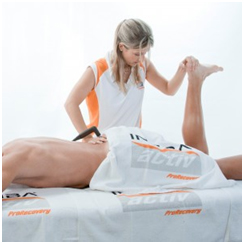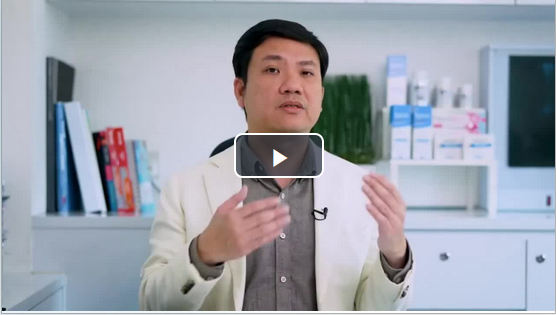Understanding Lower Back Pain: The Causes, Symptoms And How To Effectively Manage It
Introduction
Lower back pain is a very common complaint seen by pain management specialists today. Studies show that about 80 percent of the adult population have at least one episode of lower back pain during their lifetime. Although back pain usually does not indicate a serious medical problem and usually resolves itself on its own, it can be frustrating when pain interferes with your day-to-day activities.

Lower back pain is often categorized as:
- Acute, when lasting for four weeks or less
- Subacute when lasting for 4 to 12 weeks or
- Chronic when lasting for more than 12 weeks.
While most bouts of acute pain resolve themselves quickly, some individuals do go on to have long-term chronic pains and problems.
Symptoms and risk factors
Certain risk factors seem to increase a person’s chances of developing lower back pain. These include smoking, obesity, older age, physically strenuous or sedentary lifestyle, stress, and mental health issues such as anxiety or depression.
Lower back pain usually involves muscle spasms of the supportive muscles along the spine or the backbone. Pain, numbness and tingling sensations in the buttocks or lower extremity are other common symptoms. These complaints can easily be addressed and treated by specialized doctors called a lower back pain specialist.
Causes of lower back pain
There are multiple causes of lower back pain, which include:
- Muscle strain: the muscles of the lower back provide strength and mobility for all activities of daily living. As such these back muscles massively exert themselves. Muscle strain occurs when the exertion builds up and becomes unmanageable causing pain.
- Ligament sprain: ligaments connect the backbone, also called the spinal vertebrae, and provide stability to the lower back region. They can be injured with a sudden, forceful, vigorous movement or prolonged stress.
- Poor posture: poor posture such as slouching in front of the television or sitting hunched over the work desk for a long time creates muscular fatigue, joint compression, and stresses the discs that cushion the vertebrae. Years of abuse can cause muscular imbalances such as tightness and weakness, which can then lead to lower back pain.
- Age: “wear and tear” and genetic factors may cause degenerative changes in the discs and the joints of the spine. Normal aging causes reduced bone density, strength and elasticity of muscles and ligaments.
- Disc bulge: or Disc Herniation, can cause pressure on a nerve, which can eventually cause radiating pain down the leg.
- Other causes: of lower back pain include bladder/kidney infections, Endometriosis, cancer, or ovarian problem in females.
Management
Diagnosis of lower back pain includes a detailed history and physical examination by the doctor or a lower back pain specialist. After reaching a diagnosis, the patient can also be referred to a pain management clinic, to be seen by a pain management specialist. Such clinics are especially designated and equipped to deal with patients with acute and chronic pain.

Some treatment options for lower back pain comprise of:
- Rest: rest the back from aggravating and repetitive stressful activities. Also, avoid prolonged sitting, driving, bending and lifting of heavy objects.
- Ice: ice applied for 15 minutes every 1 to 2 hours is helpful in reducing lower back pain and spasm.
- Pain relieving medications: your doctor can prescribe anti-inflammatory pain relieving medications such as Aspirin, Advil, Aleve, Ibuprofen or Naproxen.
- Exercises: gentle exercise for mobility and stretching, especially for the muscles of the legs and back, can help decrease the severity, duration and recurrence of lower back pain. These include stretching your Hamstring muscles and the Hip flexors, knee to chest movements, propping up on elbows, a pelvic tilt, a tail wag and lumbar
- Proper positioning: modifying the sleeping position can help ease strain to the lower back. Make sure the bed is firm enough to give adequate support to the back.
- Dry needling
- Massage
- Surgery: only a small number of patients with lower back pain will require surgery. Surgery is necessary if there is evidence of a tumor, infection or severe weakness due to nerve compression.
Prevention
Recurrence is very common after an initial episode of acute lower back pain. The best way to lower the risk of having another episode is to stay active and avoid complete bed rest. This can also involve exercises that improve cardiovascular fitness such as walking, jogging, or swimming, as well as specific exercises to strengthen the muscles in your hips and abdomen.
Once the severity of acute lower back pain has decreased, a rehabilitation program to strengthen the hip, abdominal and back muscles can help prevent recurrences and chronic back pain. A proper posture with a neutral spine, not slumped or over-arched back is the goal. Proper lifting and body mechanics is also extremely important in preventing lower back injuries and back problems. Taking regular breaks if sitting or standing for long periods and changing positions often is ideal.
What To Expect When I Visit The Pain Relief Clinic
A typical visit will involve our doctor first understanding your medical history, concerns and previous experience with other pain treatments.
For patients who have consulted many people but have yet to receive a clear diagnosis, selecting an affordable imaging scan might be recommended to confirm the cause of your pain..
Some patients have already done scans with other doctors for their pain condition but are still not clearly told what they suffer from.
Dr Terence Tan is happy to offer you a second opinion and recommend how best to manage your condition.
We also see patients who already have a confirmed diagnosis from specialist pain doctors, but are "stuck” because treatment options offered are not practical or acceptable.
We can help by discussing options that you might have potentially never been told of.
A common experience is when a patient has already consulted a specialist doctor for pain management and is told to consider orthopaedic surgery which they find too aggressive.
Or they may have seen doctors for their pain and were prescribed painkillers with potential side effects which made them feel uncomfortable.
Many of our patients have also first tried complementary treatments or acupuncture with traditional Chinese pain doctors.
They look for a second opinion after finding any relief experienced from other treatments to be temporary or requiring repetitive treatments, which add up to time and cost.
Especially in such situations, we emphasize using non-invasive medical technology you likely have not been told about .
This can make a big difference to your results.



 Click For Live Back Pain Workshop
Click For Live Back Pain Workshop


